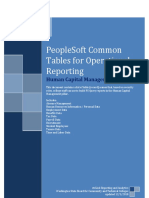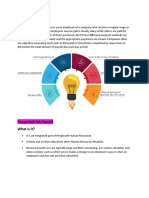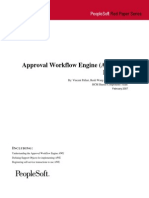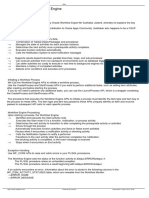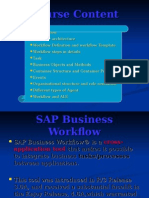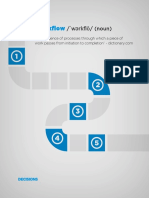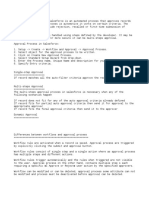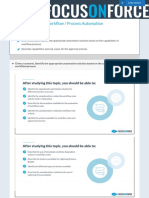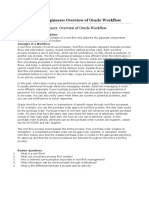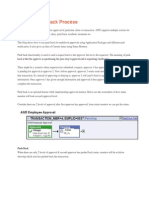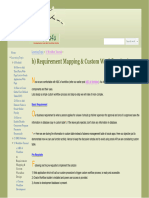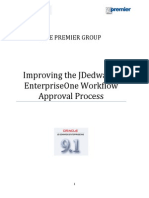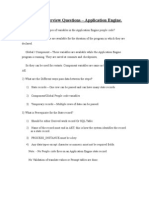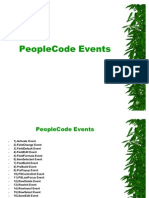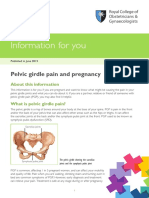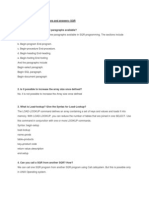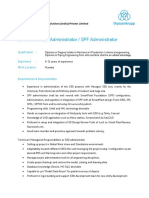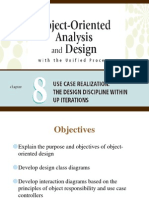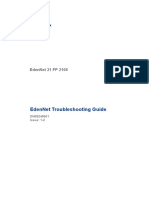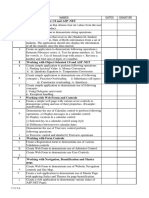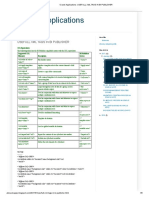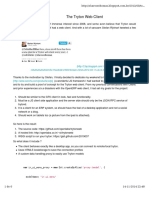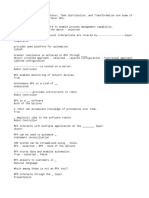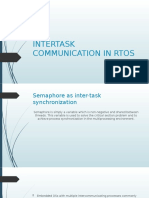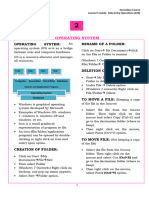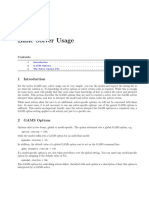Approval Workflow Engine (AWE) With a Custom Example
Table of Contents
1. ABSTRACT...............................................................................................................................................................2
2. WORKING WITH APPLICATION WORKFLOW ENGINE............................................................................3
3. HOW TO USE APPROVAL WORKFLOW ENGINE..........................................................................................5
4. SUMMARY/CONCLUSION.................................................................................................................................19
5. REFERENCE..........................................................................................................................................................19
Page 1 of 19
�Approval Workflow Engine (AWE) With a Custom Example
1. Abstract
The Approval Workflow Engine (AWE) is the engine that provides the framework and
capabilities for creating, running, and managing approval processes. The engine uses a
series of database objects combined with application component configuration settings to
determine how to process approvals using workflow.
Approval workflows are triggered when requesters submit a transaction, such as a
promotion. The application hands the transaction over to the Approval Workflow Engine,
which finds the appropriate approval process definition and launches the approval workflow.
A set of approvers then carries out tasks related to the transaction.
The Approval Workflow Engine enables three levels of users to develop, configure, and use
transaction approvals that meet their organizational requirements. For example, the process
of submitting a promotion and getting it approved requires defining who will approve the
promotion, the order in which they will approve it, and how it will be routed to approvers.
In contrast to the standard PeopleSoft workflow, which requires advanced technical skills in
PeopleSoft PeopleTools to create and maintain, approval workflow provides an alternative
workflow that is much easier to create, configure, and maintain. For example, all of the steps
in approval workflow are defined using PeopleSoft pages rather than underlying PeopleSoft
PeopleCode, so functional users can design and maintain workflow using these online
PeopleSoft pages instead of requiring technical developers to create workflow rules.
This document describes how to create and implement Approval Workflow Engine process in a
custom PeopleSoft application with an example and this example is a basic level. In this
example we are doing only header record level approvals.
Page 2 of 19
�Approval Workflow Engine (AWE) With a Custom Example
2. Working with Application Workflow Engine
The main things in the approval workflow Engine are,
The approval workflow process.
Header- and line-level approvals.
Approval flows.
Approval workflow process
Approval workflows are triggered when requesters originate a transaction, such as a requisition, and a set
of approvers carry out tasks related to the transaction. The PeopleSoft approval workflow process is a
framework that enables three levels of users to develop, configure, and use transaction approvals that
meet their organizational requirements. To implement the approval workflow process, the framework for
building and interpreting workflow approvals brings together these users:
Application developers
Application developers adapt applications for approval with minimal coding, using a defined setup
process. Making this possible is the approval workflow engine, which provides a common
implementation that other applications can use. Application developers integrate their applications
with the approval workflow engine framework using the Register Transactions page, where they
register an application with the engine and describe its components, event handler, and records.
The register stores the approval process IDs those developers create for applications. After an
end user creates an application transaction and submits it for approval, the application hands the
transaction over to the approval workflow engine, which finds the appropriate approval process
definition and launches the approval workflow.
Functional business analysts
Functional business analysts design approval workflow for use with an application. This includes
setting up stages, paths, steps, recipients, and notifications for each approval process ID.
Analysts identify the application-supplied transaction definition on which to base approval process
definitions. They use the Approval Process Definition page to define processes for approving
transactions. These processes can be used repeatedly to guide transactions through their
approval process.
End users
End users create transactions and then use an approval process with approvers and reviewers
within an approval flow. Using this process, the different end users can approve or deny requests,
monitor transaction statuses, and audit approvals.
Header- and Line-Level Approvals
Many PeopleSoft transactions have a top-level record (known as a header) with keys that uniquely
identify a single transaction in an application. Then, these transactions typically have children records
(line-level records) of this header record. This AWE enables both the header and line level approvals.
Approval Flows
Page 3 of 19
�Approval Workflow Engine (AWE) With a Custom Example
Approvals use two levels of processing: header and line. Business analysts set up the approval process
definition that determines the flow of the approval at both levels. The approval process consists of:
Stages
A stage is one part of an approval process that can contain multiple parallel paths but must be at
the same header or line record level. The system executes stages in sequence where one must
complete before the next one begins. A stage can be at either a header level or at a line level.
Stages at a line level make it possible for approvers to sign off separately on individual line items
for a single transaction. The workflow engine sees each header and each line as individual
pieces. A line is a child of the header. A header stage acts on the unique header while a line stage
acts on each line. A stage consists of one or more paths.
Paths
A path contains a sequence of steps. Within a stage, paths execute in parallel. Path entry criteria
determines whether or not a path executes for a given transaction or transaction line.
Steps
A step represents one or more approvers or reviewers. Steps within a path execute in sequence.
Separate criteria for each step determine whether or not that step executes. Each step can also
have a set of reviewers. Reviewers are notified about transactions that are pending approval by
email, through the Worklist, or both. However, the workflow proceeds without waiting for
reviewers to act.
Page 4 of 19
�Approval Workflow Engine (AWE) With a Custom Example
3. How to use Approval Workflow Engine
1) Create the custom PeopleSoft Application where do we want to implement AWE
Step 1: Create the page to trigger the approval workflow by the user
Step 2: Create the page to approve/deny the approval workflow by the approvers
Page 5 of 19
�Approval Workflow Engine (AWE) With a Custom Example
Step 3: Create the Cross Reference table
Step 4: Create the custom event handler class
Custom Appln
Package
Step 4: Create the header record as view to use in the setup
Page 6 of 19
�Approval Workflow Engine (AWE) With a Custom Example
2) Configure the Custom AWE process
Step 1: Register the custom AWE process
Page 7 of 19
�Approval Workflow Engine (AWE) With a Custom Example
Step 2: Configure the transactions
Page 8 of 19
�Approval Workflow Engine (AWE) With a Custom Example
Step 3: Setup the Process Definitions
Page 9 of 19
�Approval Workflow Engine (AWE) With a Custom Example
Page 10 of 19
�Approval Workflow Engine (AWE) With a Custom Example
3) Application Codes to call and use the AWE process
Step 1: Code to initialize the custom AWE process
Step 2: Code to call the he custom AWE process
Page 11 of 19
�Approval Workflow Engine (AWE) With a Custom Example
Step 3: Code to initialize the custom AWE process in the approval page
Step 4: Code to Approve/Deny the request
Page 12 of 19
�Approval Workflow Engine (AWE) With a Custom Example
Step 5: Code in the approval page to enable the approval action field
4) Set the user profile for approvals
Page 13 of 19
�Approval Workflow Engine (AWE) With a Custom Example
Step 1: Set the requesters Supervisor id
Requestor id is VP1
VP1s Supervisor id is VP2
Step 2: Set the Supervisors Supervisor id
Supervisor id is VP2
VP2s Supervisor id is SVP1
5) Working on the AWE example
Page 14 of 19
�Approval Workflow Engine (AWE) With a Custom Example
Step 1: Login as Requestor (VP1)
Step 2: Create a request
Step 3: Monitor the Approvals
Page 15 of 19
�Approval Workflow Engine (AWE) With a Custom Example
Step 4: Login as Supervisor (VP2)
Page 16 of 19
�Approval Workflow Engine (AWE) With a Custom Example
Step 5: Approve the request
Step 6: Check Monitor the Approvals
Page 17 of 19
�Approval Workflow Engine (AWE) With a Custom Example
Step 7: Login as Supervisors Supervisor (SVP1)
Step 8: Approve the request
Step 9: Check the request status and it will be as approved
Page 18 of 19
�Approval Workflow Engine (AWE) With a Custom Example
4. Summary/Conclusion
Creating custom Approval Workflow engine is possible and it is easier to create, configure, and
maintain. For example, all of the steps in approval workflow are defined using PeopleSoft
pages rather than underlying PeopleSoft PeopleCode, so functional users can design and
maintain workflow using these online PeopleSoft pages instead of requiring technical
developers to create workflow rules.
5. Reference
PeopleSoft Enterprise Supply Chain Management 9.0 Common Information PeopleBook
Page 19 of 19









